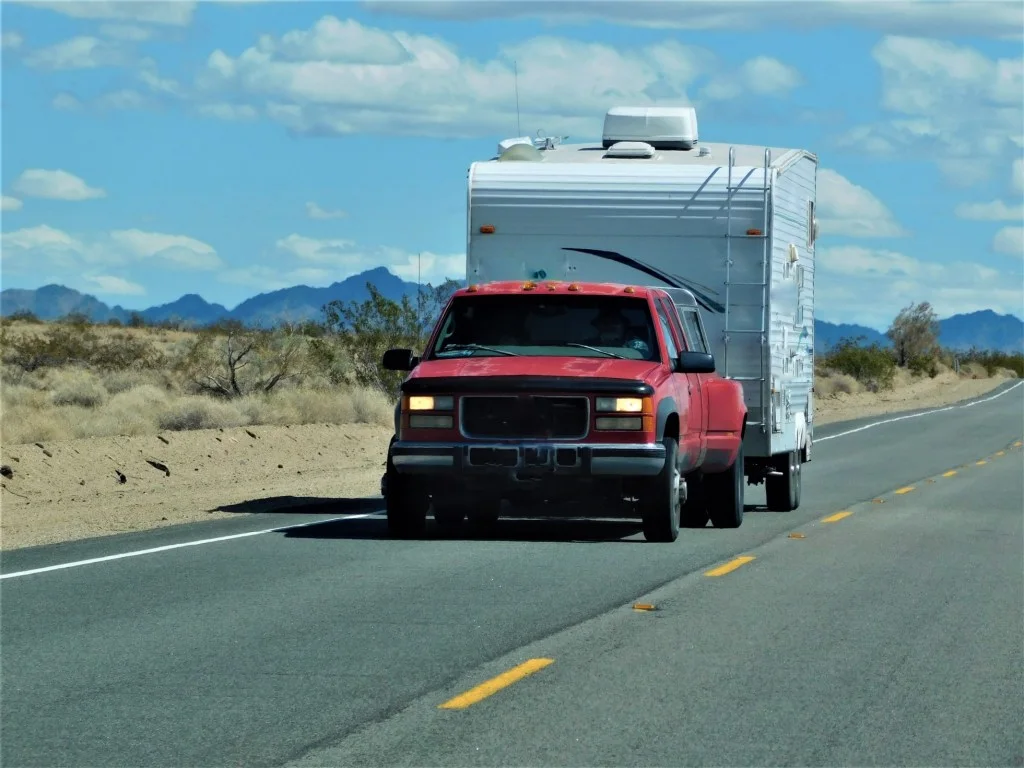How to Find Towing Capacity for Your Truck Or SUV
You’ve decided to purchase a trailer. But how do you know if your SUV or truck has the right towing capacity?
Finding the towing capacity for your truck or SUV can be quite simple if you know what to look for and where.
Let’s jump into how.
What is Towing Capacity and Why is it Important?
Towing capacity is the maximum amount of weight your vehicle can handle while maintaining safety and efficiency on the road. Certainly, it’s imperative to know the proper weight before attaching a trailer to your vehicle.
Moreover, following the required weight limit will keep you and your vehicles safe and secure both on and off the road.
Firstly, to determine towing capacity, you’ll need to understand a few terms. Not every word or phrase is self-explanatory, and many of them are acronyms.
Below, we describe everything you need to know to understand your vehicle’s towing capacity.

Understanding Weight Types
What is GVWR?
GVWR stands for Gross Vehicle Weight Rating. The industry defines it as the maximum loaded weight of the vehicle as decided by the vehicle’s manufacturer.
The GVWR includes the passengers, any cargo, and the vehicle itself. This is the weight before attaching the trailer to the vehicle.
What is GCWR?
The vehicle manufacturer determines the GCWR or Gross Combined Weight. It’s the combined weight of the passengers, the cargo, the vehicle, and the trailer to be towed.
What is GAWR ?
GAWR is the Gross Axle Weight Rating. The industry defines it as the maximum weight both axles can handle on the truck or SUV.
The GAWR using two rating categories: FR for the Front Axles and RR for the Rear Axles.

What is Curb Weight?
The industry defines curb weight as the vehicle’s weight without passengers, cargo, or trailer loads. However, it does account for gasoline and other fluids necessary for the truck or SUV to function properly.
What is Payload Capacity?
The truck or SUV manufacturer determines the payload capacity. The industry defines it as the total weight that a truck or SUV can tow.
This also includes passengers and cargo, and these must fit in the truck or SUV. Payload capacity does not include the towing capacity.
What is Tongue Weight?
The Tongue Weight or TW is the downward force that the back of the trailer can handle. Knowing this can give you increased control over your SUV or truck and the trailer being towed.
What is Dry Weight?
The industry defines dry weight as your truck or SUV’s weight. This does not include the weight of your cargo, passengers, or fluids that are normally needed for your vehicle to function properly.

How to Find Towing Capacity on Your Truck or SUV
Most trucks and SUVs will list the manufacturer’s towing capacity in one or more of several places. You will generally find it in the owner’s manual or on the door jam on the driver’s side alongside the tire pressure requirements.
If you’re unable to locate the towing capacity in those two places, search for it on the company’s website. You may have to do a bit of seeking, but you should be able to find it fairly easily.
Pro Tip: Here are the best SUV Crossovers for towing.
How to Calculate Your Towing Capacity
After checking your towing capacity as listed with your truck or SUV manufacturer, it’s quite simple to calculate its capabilities. Remember, the combined weight of your truck or SUV plus trailer, cargo, and passengers should not go over the maximum towing capacity.
If your truck or SUV’s weight is higher than the total weight of the trailer, the trailer is safe to tow.
If the trailer weight is greater than the recommended towing capacity, the trailer should not be hitched up to your SUV or truck.
To determine your exact towing capacity, follow these three steps. 1) Find out the curb weight located on the VIN. 2) Add to that the total weight of the passengers, cargo, and fuel. 3) Subtract this total from your vehicle’s gross combined weight (GCWR).
You now have your max towing capacity. But, remember to check your hitch. Can it handle the weight?
Pro Tip: Here are the best 1/2 ton trucks for towing.
How to Look Up Towing Capacity by VIN
The VIN number stands for Vehicle Identification Number. It is made up of 17 unique characters to specifically define your vehicle.
It can be found on a sticker generally on the outside bottom of the windshield on the driver’s side. Each section of characters has a specific meaning – Such as where the vehicle originated, where it was made, the model year, etc.
To use the VIN to find your towing capacity is pretty straightforward.
Head on over to the individual manufacturer’s website for your vehicle that will be doing the towing. Search for towing capacity and input your VIN when requested. While not every manufacturer has this feature available, most do.
Play it Safe with Towing Capacity
Breaking the rules might be a way of life for some people. But when it comes to towing a trailer with your SUV or truck, breaking the rules here could cause severe damage – not only to your tires, transmission, and engine but to you and others on the road.
Play it safe when it comes to towing capacity, and you and your vehicles will last a long time.
Discover the Best Free Camping Across the USA
To be honest with you, we hate paying for camping. There are so many free campsites in America (with complete privacy).
You should give it a try!
As a matter of fact, these free campsites are yours. Every time you pay federal taxes, you’re contributing to these lands.
Become a FREE CAMPING INSIDER and join the 100,000 campers who love to score the best site!
We’ll send you the 50 Best Free Campsites in the USA (one per state). Access the list by submitting your email below: